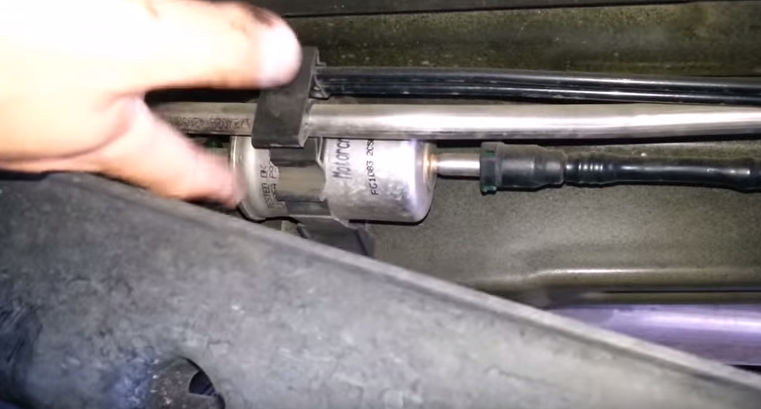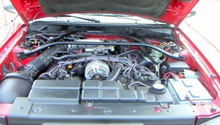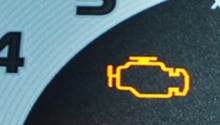Ford Mustang V6 2005-2014: Why Won't My Car Start?
Your Mustang won't start for a number of different reasons. Narrow down the possibilities one at a time until you find the culprit.
This article applies to the Ford Mustang V6 (2005-2014).
You bought a Mustang to drive, and it just won't start. There could be a hundred possibilities, but you need to take a steady, calculated approach to find the problem. A series of simple tests will help guide you down the right path. Let's analyze the symptoms step-by-step.

Materials Needed
- Scotch-Brite pad
- Flashlight
- Fuse puller
- Voltmeter
- Socket set and ratcheting wrench
Step 1 – Does the engine crank?
If you turn the key and nothing at all happens, it's most likely a power issue. Check your fuses, battery connection and all wiring from the battery to the starter. Your battery could be completely dead—try jump starting it, or take the battery to your local auto parts store for testing. A weak battery will often reveal itself when you hear clicking sounds coming from the starter.
Look closely for corrosion on the battery terminals or on the connectors to the starter (see Figure 1). Clean those connectors as well, and if possible, verify the voltage levels across the starter. If it's getting current but not turning, you could have a bad starter or a bad engine. A locked up engine won't turn, no matter how much current you send through the starter!

Step 2 – The engine cranks but won't start
Your engine needs air, fuel and spark to get started. Spark is a result of a signal sent by the ignition system. The coil, crank and cam sensors are all part of this equation, as well as wiring to and from the ECU.
Test the ignition coil and all of the associated wiring. Look for cracks, splits, or connector corrosion.
Next, test the cam and crank position sensors (see Figure 2). These sensors send signals to the ECU that are a factor in the ignition process. A faulty sensor could tell the ECU not to start, and replacing it will resolve the problem immediately.

Once you've ruled out spark issues, it's time to look at the fuel system.
Step 3 – Is the engine getting fuel?
So the starter is spinning and the spark is there, but it still won't start. Now it's time to check for fuel.
Once again, it pays to start simple. Check the wiring throughout the fuel system, including any related fuses or relays. You don't want to dig deeper if your problem is sitting right there in a fuse box in front of you.
It certainly could be a bad fuel pump, but be sure to check the voltage at the pump to make sure you're getting power. If you are getting power but no fuel is reaching the engine, your pump will need to be replaced.
If the pump is working and fuel is still not reaching the engine, check your fuel filter. It could be the reason you're not getting adequate fuel to the engine, and it's a relatively inexpensive repair (see Figure 3).

Step 4 – Check for air or other possible issues
Those are the most basic issues that could be causing the problem. There are other less obvious problems like a manifold leak or bad mass airflow sensor. Many times, these malfunctions will trigger a check engine light, so be sure to investigate any codes with an OBD reader.
Here are a few other potential culprits:
- Bad fuel injector(s)
- A chipped flywheel
- A bad ECU
ECU troubleshooting can be challenging, and this would be best left to the professionals at your local dealer or repair shop.
Related Discussions
- Cold Car Won't Start - MustangForums.com
- Car Won't Turnover - MustangForums.com
- Clicking Sound, Car Won't Start - MustangForums.com
- Replaced My Battery, Now Car Won't Start - MustangForums.com






